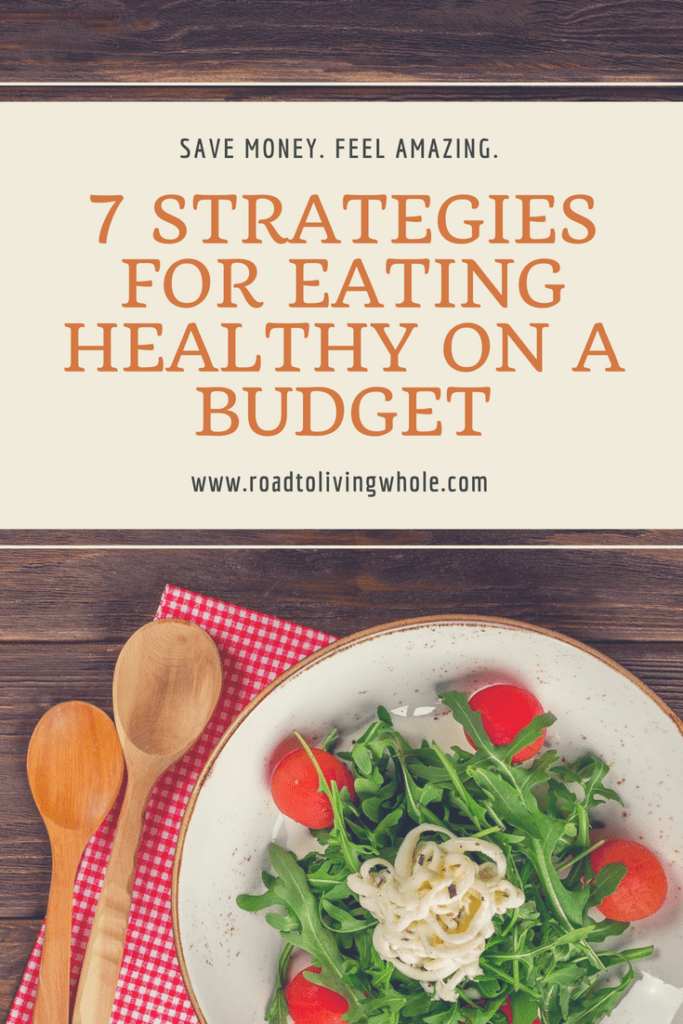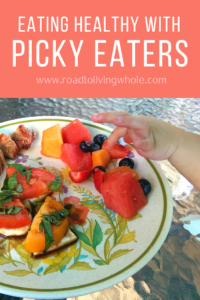Many people feel like eating healthy is out of reach. It’s expensive and complicated while eating less healthy is cheap. I’ll be honest with you, yes, it is cheap in terms of your grocery budget. I know a family of 3 that spends $50 a week on groceries. They live off hotdogs, frozen pizzas, eggs, cereal, and popcorn. I spend between $100 and $130 on average for a gluten and dairy free mostly paleo eating family of 3.
There is still a cost that you won’t see in the grocery budget though. And that’s medical bills and quality of life. Cheap food isn’t as nourishing so you will be sick more often which means doctors visits, medications, and time off work and school. It costs our energy, quality sleep, impacts our moods, and thus, our relationships. Kids get in trouble at school for being wiggly, then are grumpy from a sugar crash once the carbs process out of the blood. Then we are having meetings with the teachers. This is costing us more time and often, heartache. Eating healthy is worth a little extra money.
It doesn’t have to cost an arm and a leg though!
When I first started eating healthy, I shopped at Whole Foods and spent $800 or more a month on one adult and one toddler. That’s insane. I wanted to eat the best of the best but it wasn’t cost effective and I could still eat healthy without spending as much on food as I did on rent. As time went on I learned 7 strategies to make eating healthy affordable. Today I’m sharing them with you.
7 Strategies For Eating Healthy On A Budget
Cook at home.
 Cooking at home is the number one way to make eating healthy affordable. When you do the work yourself, you are cutting the cost by two-thirds on average. A healthy, vegetable-packed meal can easily cost less than $2 per person while buying a meal done for you can cost anywhere from $6 to $18 per person. That’s significant, to say the least.
Cooking at home is the number one way to make eating healthy affordable. When you do the work yourself, you are cutting the cost by two-thirds on average. A healthy, vegetable-packed meal can easily cost less than $2 per person while buying a meal done for you can cost anywhere from $6 to $18 per person. That’s significant, to say the least.
Meal plan.
One big problem people run into is buying a bunch of food at the store without a plan. They get home and don’t know how to mesh all the food they bought. So then they dine out instead. Thus doubling their cost or more. Meal planning streamlines your budget, makes grocery shopping a cinch, and ensures you’re eating the food you buy. Need help developing a system? I got you covered. Check out my meal planning program here.
Eat seasonally.
 Learning how to cook with the produce that is cheap now is the best way to maximize your budget. It also adds variety into your life. I have about 15 recipes per season that are my go-to weekday recipes, then try new stuff on the weekends. By the time I’m bored with salads and zucchini, fall comes and I’m happily digging into winter squash, brussel sprouts, and bone broth based soups. If eating organic is important to you, eating seasonally is a must. Organic produce is almost the same price as it’s conventional counterparts when they are in season. When they are out of season the cost can double or even triple! It’s definitely worth learning to eat with the seasons.
Learning how to cook with the produce that is cheap now is the best way to maximize your budget. It also adds variety into your life. I have about 15 recipes per season that are my go-to weekday recipes, then try new stuff on the weekends. By the time I’m bored with salads and zucchini, fall comes and I’m happily digging into winter squash, brussel sprouts, and bone broth based soups. If eating organic is important to you, eating seasonally is a must. Organic produce is almost the same price as it’s conventional counterparts when they are in season. When they are out of season the cost can double or even triple! It’s definitely worth learning to eat with the seasons.
Buy in bulk.
This is a big one! (No pun intended.) Grains, beans, sauces, nuts, seeds, dried fruit, and other pantry staples are much cheaper when bought in bulk or from the bulk section. This tip alone saved me over $30 a week. I invested in large airtight glass storage containers from IKEA and started stocking up. Not only did it save me a ton of money, I always have food available to cook up quickly. Quinoa is my go-to when running low on food but don’t feel like running to the store until tomorrow.
Learn how to repurpose leftovers.
Eating the same thing day after day gets boring fast. Learning how to repurpose your leftovers will save you money and keep you from getting bored and throwing money in the trash when those leftovers don’t get eaten. Leftover chicken I will add to a pasta dish, make into a chicken salad, or throw in a lettuce wrap. A bunch of small amounts of leftover vegetables that didn’t get added into recipes I’ll make into a skillet meal with eggs. A little creativity will go a long way with your budget and taste buds.
Eat dark leafy greens.
Making sure we are getting our nutrients will keep hunger and late night cravings at bay. Dark leafy greens like spinach, kale, collard, and swiss chard are not only affordable, they are like nature’s multi-vitamin (along with liver). Adding them to your diet will nourish your cells and reduce cravings because your cells are getting the nutrients they need. Add a cups worth to your smoothies, chop up and add your sauces, and eat salads to get plenty into your days.
Invest in essential kitchen tools.
It may seem counterintuitive but investing in specific kitchen tools that make cooking at home easier will go a long way in saving you money. Pre-spiralized vegetable noodles cost triple what it would cost to make them yourself, A sharp knife and quality cutting board make chopping a breeze. A good, high powered blender (like a Vitamix or Nutribullet) makes smoothies, sorbet, and sauces a breeze and have good texture. When cooking is easier, you’re more likely to cook what you buy and, even more importantly, enjoy it.
Other Blogs You May Enjoy












